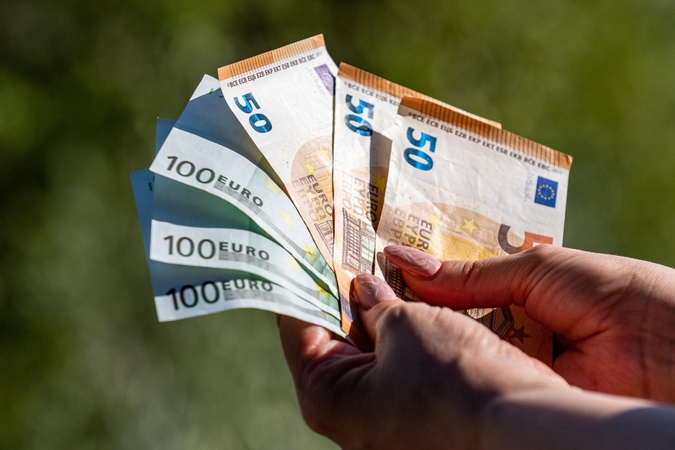It is hard to believe that while the number of ships in the Baltic Sea increases, the number of accidents decreases.
Fewer collisions
Helsinki Commission (HELCOM) report states that in 2009 there were 105 shipping-related accidents in the Baltic Sea, which is 22 percent less than in 2008 and 15 percent less than in 2007.
It has been the lowest accident rate in the Baltic Sea since 2003.
In most cases, ship accidents take place in ports, straits and littoral zones. In 2009, there was no one shipwreck in the open Baltic Sea.
The representative of HELCOM maritime sector Monika Stankiewicz explains the accident reduction by installation of new navigational systems such as AIS (ship identification) and GOFREP (Gulf of Finland Reporting).
The highest accident rates in the Baltic Sea are the Denmark straits and the Gulf of Finland. Over the decade, about 53 percent of ship collision cases have been recorded in the Denmark straits, and 22 percent accidents have taken place in the Gulf of Finland.
However, in 2009, out of 34 collisions, only one occurred in the Gulf of Finland.
The collisions’ category includes vessels striking navigational signs, quays and other objects. In 2009, there were only 6 cases of direct ship-to-ship collision in the Baltic Sea.
Though declining, the number of accidents still remains relatively high. Last year, rating second after ship collisions, were 38 cases of vessels being stuck in shallow waters. Ships get often caught in shoals not only in the Denmark straits, but also in the Gulf of Riga.
The year 2009 witnessed the increased number of cases, where ship accidents caused oil products’ spills. By comparison, while there was an average of 7 percent of such cases between 2000 and 2009, in 2009, it reached 11 percent. Surprisingly, 9 of 11 cases are related to fuel filling in ports. The concern is that even 26 percent of accidents in the Baltic Sea in 2009 involve passenger ships.
This can be explained by the fact that passenger shipping in the Baltic Sea is particularly intense. Although the Baltic Sea has witnessed severe cases of sinking of passenger ships, there were no such records in 2009. One of the most famous similar cases remains the beginning of March of this year, when 50 ships, including 6 passenger ships, had been caught in ice in the Baltic Sea near Stockholm and the Gulf of Bothnia.
The Baltic shipping is to intensify
The representative of the HELCOM maritime sector M. Stankiewicz argues that due to the crisis, the Baltic Sea shipping decreased by 13 percent in 2009.
Based on the Vessel Identification System (AIS), 62, 700 ships crossed the Danish straits in 2009, which is 20 percent more than in 2006. Bulk carriers comprised 46 percent of the ships, tankers made 21 percent, and passenger ships made 4.5 percent.
Although the Danish straits don’t specify how many ships sail the Baltic Sea, but this may indicate the type of relationship the Baltic Sea has with other seas and countries.
The Baltic Sea is considered one of the most important global shipping arteries. About 9 percent of all global cargo transportation and 11 percent of oil and its products’ shipping take place in the Baltic Sea.
There’re about two thousand ships sailing in the Baltic Sea regularly. The Baltic Sea is crossed by 3.5-5 thousand cargo ships per month. The ships annually transport about 800 thousand tons of cargo and about 250 million tons of oil and its products.
Bigger and bigger ships tend to enter the Baltic Sea. The 100-150-thousand-ton oil tankers are no longer a surprise. The Baltic Sea, the port of Gdansk in particular, is able to receive transatlantic container carriers, able to carry 8-9 thousand TEUs of containers.
The Baltic Sea cargo development study, conducted in 2003, states that by 2020 shipping in the Baltic Sea will increase even by 64 percent.
‘Accidentless’ year
Klaipeda port does not record a tendency of increased shipping. Compared to 2007, when the port was visited by 7,919 ships, and 2008, when the port welcomed 8348 ships, today the number is dropping. In 2009, the port welcomed 7,529 ships. This is quite an interesting tendency this year. While aiming at a record handling capacity, the port receives 13.6 percent less vessels compared to the first half than in 2009.
According to Klaipeda State Sea Port Captain Viktoras Lukosevicius, it is clear that this year the port receives substantially larger gauge vessels, meaning that oil products and fertilizers are shipped in larger quantities.
The case of Klaipeda port shows that while the ship size grows, their total number will decrease. This will result in further decline in ship accidents.

Incident: probably the most memorable incident over the last years has been the 2002-year accident, when the fully-loaded tanker “Princess PIA” sailed on a shoal at the Klaipeda port gates.
The Director of Port Surveillance Section of Klaipeda State Sea Port Authority, Juozas Saudargas, said that neither in 2009 nor 2010 did the port of Klaipeda record a single accident. The last serious incident was witnessed in April 2008, when the tug “Barta” turned over. The last incident was documented in July of 2008, when one of the pleasure boat "Ark" passengers had her two fingers amputated as the other passing ship pressed her hand due to the choppy sea.
Accident rate in the port of Klaipeda has significantly reduced. For instance, in 2001 the port recorded even 23 incidents. There were several cases of fishing boats being washed to the shore. In the same year, the tanker “North Pacific” had a spill in the Baltic Sea near the Butinge oil terminal. Due to extreme weather conditions during the oil transfusion, an underwater oil filler pipe broke, spilling 59 tons of oil into the sea.
The record year of 1953
The Lithuanian coast is not as innocent, though. Vilnius University professor Eduardas Cervinskas provided data, claiming that in Soviet times the port of Klaipeda would have 12 accident occurrences per year. The year 1953 stood out with a total of 69 accidents.
In Soviet times there were some tragic accidents, too. For 26 years had the remains of the 3, 400-ton capacity ship “Morns Bernstein” been lying on Smiltyne beach, since it was washed to the shore in 1969.
In 1981, a 170-meter long and 19-thousand-ton capacity tanker “Globe Asimi”, which then belonged to the Greek company “Gibraltare”, crashed at the northern breakwater, polluting the Lithuanian seaside with fuel oil. The vessel spilled 16 thousand tons of fuel oil, inflicting 80 million U.S. dollars of losses. The ship’s crew of 29 people was rescued, and no seafarers were hurt.
In the same year of 1981, in the port of Klaipeda, the “Smiltyne Ferry” ship “Nida” crashed into a fishing boat. The fatal accident took lives of two 17- and 18-year old female passengers.
In 1986, at the northern breakwater sank the German vessel “Rudolf Breitscheid”.
The remains of both “Globe Assimi” and “Rudolph Breitcheid” were submerged in 2008.
“Linkuva” tragedy
Various incidents had been recorded after the Lithuanian declaration of independence as well.
We well remember the years when ships would “jump out” to the shore one after the other. In 1997, the Swedish bulk carrier “Deborah” landed on the shoal near Melnrage. In 2000, two Norwegian company vessels “Seines” and “Star Trader” were washed to Palanga beaches. “Seine” was sold for one U.S. dollar to a person from Klaipeda. Such selling of the vessel had led to allegations that the ships were washed to the Lithuanian coast with the intent to get rid of them after a receiving the insurance money.
Another memorable incident occurred in December, 2002. A loaded tanker “Princess PIA” sailed on a shoal at the port gates. The ship was successfully towed away.
Although the rate of ship accidents in the Baltic Sea, as well as the port of Klaipeda, has sharply decreased, Lithuanian ships have recently got into more emergency situations.
Last year, Lithuanian ships got into various accidents 7 times. None of these cases damaged the Baltic Sea statistics, for they all occurred outside its territorial waters. Only one accident that was considered serious enough was further examined. On 24th June, 2009, while reversing in Congo Matadi port, the ship “Felicitas”, registered in Gibraltar, hampered and damaged the board of the Lithuanian ship “Vega”.
The year 2000 has been the most painful year for Lithuanian shipping. On 21st June, at 7:45 a.m. Lithuanian time, the transport refrigerator “Linkuva”, caught in the hurricane “Carlota” in the Pacific Ocean at the Mexican coast, sent its last message. Later on, 180 miles northwest of the last radio call zone, were found lifeboats and the vessel barrel. 18 sailors did not return from the trip.
|
Accidents in the Baltic Sea: 2004 142 The major accidents in the Baltic Sea
On 21st November, 1981, at the northern pier of Klaipeda port crashed the tanker “Globe Assimi”. The vessel spilled 16,493 tons of fuel oil. So far, it has been the largest oil spill in the Baltic Sea. On 28th September, 1994, the cruiseferry’s “Estonia” sinking in the Baltic Sea claimed 859 lives. The Estonia disaster occurred around 2 a.m., en route from Tallinn to Stockholm. There were 996 people onboard in total.
On 29th March, 2001, the oil tanker “Baltic Carrier” collided with the cargo ship “Tern” near the Danish coast. Around 2, 400 tons of oil had been spilled to the sea. In November 2001, due to extreme weather conditions, the breaking of the underwater oil filler pipe during the oil transfusion in Butinge Oil Terminal caused a 59-ton oil spill into the sea.
On 31st May, 2003, at the Danish island of Bornholm, Chinese vessel “Fu Shan Hai” crashed into Cyprus registered Polish cargo ship “Gdynia”, releasing 1, 200 tons of oil into the environment. |
|---|



Naujausi komentarai